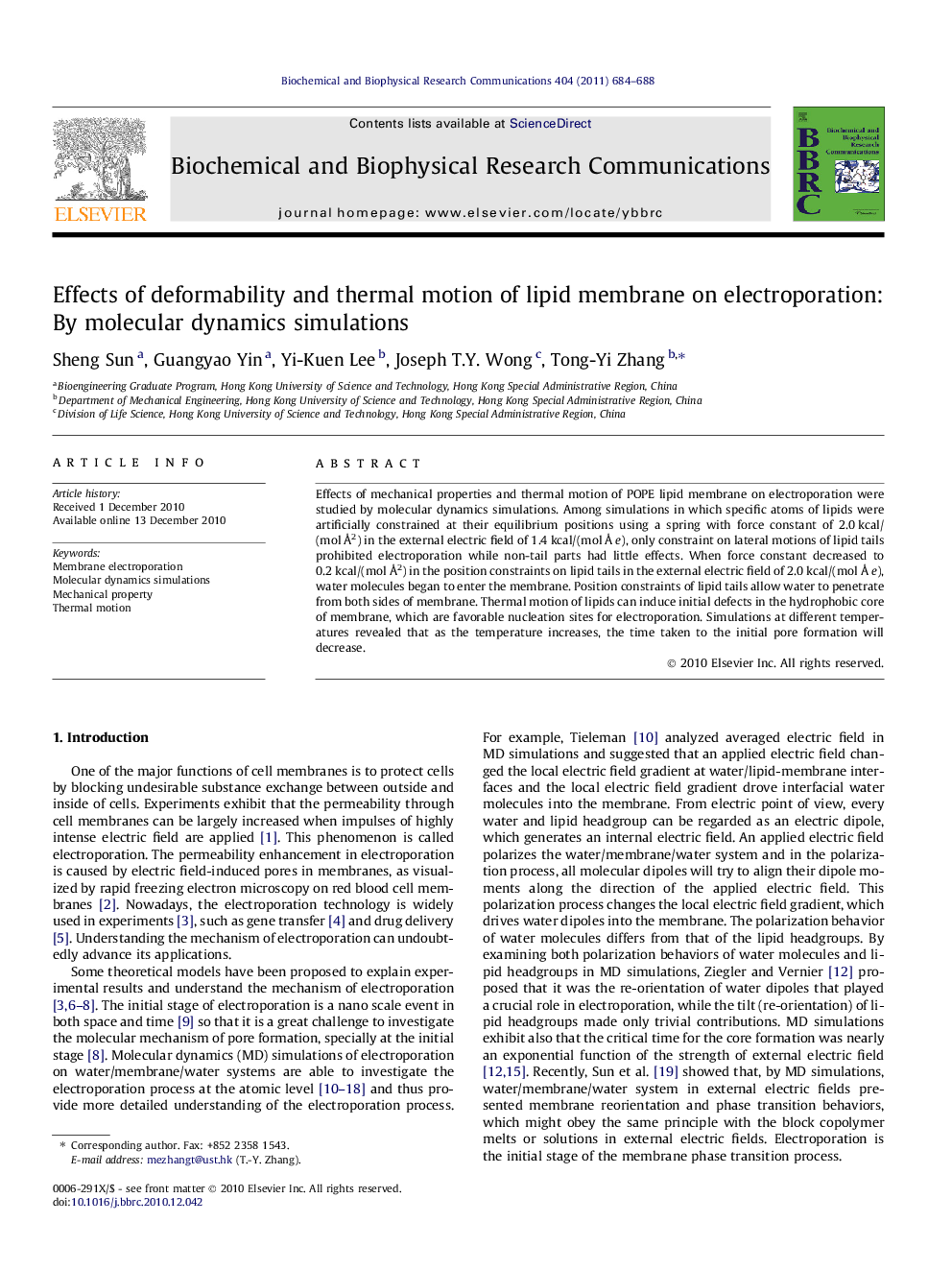| Article ID | Journal | Published Year | Pages | File Type |
|---|---|---|---|---|
| 1930720 | Biochemical and Biophysical Research Communications | 2011 | 5 Pages |
Effects of mechanical properties and thermal motion of POPE lipid membrane on electroporation were studied by molecular dynamics simulations. Among simulations in which specific atoms of lipids were artificially constrained at their equilibrium positions using a spring with force constant of 2.0 kcal/(mol Å2) in the external electric field of 1.4 kcal/(mol Å e), only constraint on lateral motions of lipid tails prohibited electroporation while non-tail parts had little effects. When force constant decreased to 0.2 kcal/(mol Å2) in the position constraints on lipid tails in the external electric field of 2.0 kcal/(mol Å e), water molecules began to enter the membrane. Position constraints of lipid tails allow water to penetrate from both sides of membrane. Thermal motion of lipids can induce initial defects in the hydrophobic core of membrane, which are favorable nucleation sites for electroporation. Simulations at different temperatures revealed that as the temperature increases, the time taken to the initial pore formation will decrease.
Research highlights► MD simulations show that deformability and thermal motion of membrane affect electroporation. ► Stiffer membrane inhibits electroporation and makes water penetrate from both sides. ► Higher temperature accelerates electroporation.
